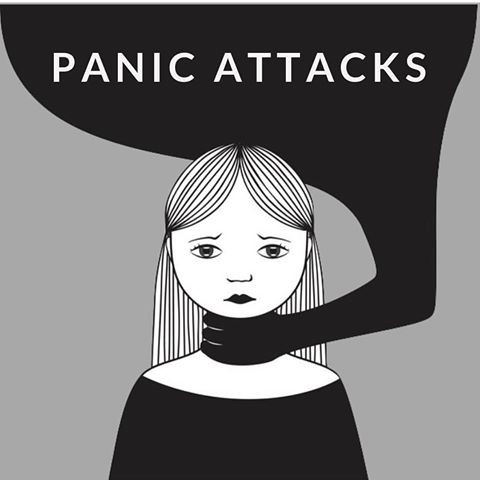It sometimes seems that there’s a kind of inflation happening in sickness. Just like how beer or movie tickets get more expensive over time, so too the type of health issues afflicting people seems to be escalating.
Perhaps you feel soft asking for a day off with ‘I have a cold’, so you promote your illness to ‘a bout of the flu’. Or that a headache isn’t a good enough reason to cancel evening plans, so instead you say you have a migraine.
The catch is, each time the severity of an ailment is overstated, the bar is raised a little higher on what a ‘meaningful’ illness is. Keep it up and the next generation won’t be able to call in sick with anything less than a mild case of AIDS, or because they caught a 24-hour Ebola bug.
Exaggeration also trivialises the hardship of actual sufferers. A person experiencing a real migraine is probably more incapacitated than someone with an embellished headache: expecting them to take painkillers and get on with their day may not be fair.
So in the interest of promoting accuracy and discouraging self-aggrandisement, let’s take a look at three illnesses which commonly figure in exaggeration.
Migraine
It sometimes seems that no-one gets headaches anymore. Instead, people only get migraines.
When I was young I thought a migraine was just a really bad headache. It still made sense why migraines were a big deal – after all, headaches are bad enough, so no wonder people were upset by a super-headache.
But then I learned what a migraine really is. And it’s not just a super-headache.
Migraine experiences vary between people and between events. At its fullest extent, a migraine consists of four phases:
- Prodrome phase: Two hours to two days before a migraine arrives, symptoms may appear such as food cravings, altered mood, changes in gut behaviour, muscle stiffness, and sensitivity to smells or noise.
- Aura phase: Occurring in a minority of migraine sufferers, visual auras are short-lasting visual disturbances. These can include one side of the field of vision going missing or with blurred elements. More common are flickering zigzagging lines striking out from the centre of vision, sometimes likened to the walls of a fortress. Less common are sensory or motor auras, such as tingling and numbness in one arm that spreads across the body until reaching the mouth or nose.
- Pain phase: A moderate to severe pulsating headache lasting up to three days, usually on just one side of the head. Often associated with neck pain and worsened by physical activity. Other symptoms that may be present include sensitivity to light/smell/sound, fatigue, nausea, vomiting, frequent urination, diarrhea, blurred vision, sweating, and swelling of the scalp.
- Postdrome phase: Once the headache subsides, for the following couple of days the sufferer may experience gastrointestinal upset, impaired thinking, residual head pain, mood disturbances, and fatigue.


If you’re struggling through the day with a pounding head, I do feel for you. But unless some of the above symptoms match your experience, particularly if you want to vomit or hide from light, then it’s almost certainly a headache and not a migraine.

Flu
“I can’t come into work today, I have the flu.”
“What did you do on the weekend?” “Not much, the kids were sick with the flu.”
In reality, probably no-one had the flu. Rather, it was just a cold.
Flu, more fully called influenza, is a potentially deadly disease. You will be familiar with some of recently famous examples. Remember bird flu? SARS? Swine flu? Each of these caused a minor panic due to fears they’d spread widely, causing considerable deaths around the globe.
While none of these outbreaks led to catastrophe, we don’t have to look too far back in history to find times when we weren’t so lucky. In 1968, one million people died from the Hong Kong flu. Twice that number were killed in the 1957 Asian influenza outbreak. Yet both pale in comparison to the Spanish Flu.
Appearing in the final year of World War I, by the time that the 1918 Spanish Flu pandemic subsided it had infected one-third of humanity and killed over 50 million people. The casualties were global, from the battlefield hospitals of Europe to the Arctic and remote islands in the Pacific. Uniquely, the principal victims were not children and the elderly, but healthy young adults. At least three times as many people died from Spanish Flu than from the first World War, and it rivals the Black Death as the deadliest disease outbreak in human history.

Admittedly most flu is nowhere near as severe as those mentioned above. Nonetheless, around 375,000 people die from the flu per annum. That’s more than the population of the ten smallest countries combined, dying every year. A few million more become sick enough to require hospitalisation.
So whether a pandemic or not, the flu can be a big deal, particularly for those with compromised immune systems (like young children, the elderly, pregnant woman, or those with chronic illness).
Contrast this with the common cold. Though also caused by viruses, a cold is very unlikely to result in death or hospitalisation.
But if you’re not dead or in hospital, how do you tell if you have a flu or if it is a cold? Well, this can be quite tricky as there is a lot of overlap in symptoms. Whether you have a cold or a flu, there is a good chance you will have respiratory tract problems such as nasal congestion, runny nose, sore throat, cough, and sneezing.
Where influenza begins to set itself apart is in the symptoms experienced elsewhere in the body. Fever, chills, earache, and aching behind the eyes are not commonly seen in adults afflicted with a cold. And though a cold can sometimes cause muscle ache, headache, joint pain, loss of appetite, and fatigue, these are more commonly observed in influenza sufferers.
Research has found that short of a laboratory test, the most reliable early indicators of influenza rather than cold are:
- rapid onset of symptoms, such as chills, body aches, or fever.
- high fever (especially over 38℃)
- severe cough (usually dry)
In addition to being more likely to cause problems beyond the respiratory tract, a flu tends to result in more severe versions of those symptoms shared with colds. This is particularly the case with muscle ache, joint pain, cough, fever, and fatigue.
Sufferers will commonly have great difficulty leaving bed for a day or two. A flu tends to last longer than a cold also, with most symptoms taking up to ten days to resolve, however this isn’t always the case.
There are many strains or sub-types of both the common cold and influenza viruses – over 200 in the case of the cold. The particular strain will affect the severity of any illness. Symptoms will be lessened if you have partial immunity due to being exposed to a similar strain previously. In fact, it has been estimated that around 1/3rd of influenza infections do not cause any symptoms.
But perhaps the greatest indicator that you are probably suffering from a cold rather than a flu is that adults are over 30 times more likely to catch a cold. The average adult catches around 3 colds per annum. In comparison, unvaccinated adults on average suffer from a flu less than once per decade.ref
None of this is to say that it doesn’t suck to have a cold. It does, very much so. But just tell it like it is: odds are that you don’t have the flu.
Panic Attack
Moving now from the physical to the psychological, I’ve heard people describe situations like “I was having a panic attack because I couldn’t find the kids” or “losing my passport at the airport would give me a panic attack.”
I can see why they are using that term. They were in a panic, and it was unpleasant and sudden i.e. like an attack. They’ve probably heard the term ‘panic attack’ at an earlier point and sub-consciously we tend to fall back on established structures when speaking (which in part is why the latest fad ‘corporate-speak’ words seem to spread so quickly).
It might come as a surprise then to learn what an actual panic attack involves.
Frequently, someone experiencing a panic attack believes that they are dying. Not in a “oh god I was so embarrassed I could die” way but an actual, physical sensation of imminent death. The two primary sensations in a panic attack are shortness of breath and chest pain. Many panic attack victims report to emergency departments believing that they’re having a heart attack.
Adding to those symptoms can be sweating, a racing pulse, and sensations of heat or coldness. Nausea can suddenly arise, along with physical numbness and a loss of bodily control. The body floods with hormones, leading to tunnel vision as adrenaline redirects the blood supply. A sensation of choking or smothering is often reported, and a feeling of fear or dread.

Panic attacks are typically associated with anxiety-type disorders but can also be caused by non-psychological health concerns. They are more common in people with above-average intelligence. Like all the ailments we’ve looked at, the type and intensity of symptoms will vary between instances and people.
What can make panic attacks even more debilitating is when anxiety develops about experiencing them. If you have panic attacks while travelling, understandably you might become anxious about putting yourself in that situation. Worse, if there’s no pattern associated with the attacks then perhaps you become increasingly reluctant to go anywhere. So now you might have an anxiety disorder, sprinkled with acute panic attacks, and then another layer of anxiety about the panic attacks on top of that.
A panic attack doesn’t require a causative event – they can happen at any time. Maybe while you’re home alone reading in bed. Maybe while at work. Maybe while driving. Every sufferer had a first time, when they would have had no idea what was happening to them, or even if they’d survive.
Given this context, you can imagine how hearing instances of panic described as panic attacks must sound to someone unfortunate enough to experience the real thing.
There we have it. You don’t need to have a migraine, panic attack, or flu to deserve sympathy. Instead, tell it like it actually is: “I have a headache”, “I was panicking”, “I have a cold”. Either way you’ll be feeling sorry for yourself. But be truthful and you can take some small comfort from having overcome the urge to exaggerate. After all, it’s better to have integrity and a cold than just a cold.
Did you like this article?
Do you like this site?


Well written but three symptoms are missing from migraines – 1) The feeling of extreme pressure in the head, particularly before vomiting that makes you involuntarily scream in pain but scared to scream because of the pain it brings and all you want is a screwdriver to stick in your head to relieve the pressure (thank you government for making codeine so inaccessible as it was the one thing that could partially numb it or knock me out). 2) The inability to correctly form words or sentences, and general brain confusion. Similar to a stroke but just migraine. 3) The… Read more »